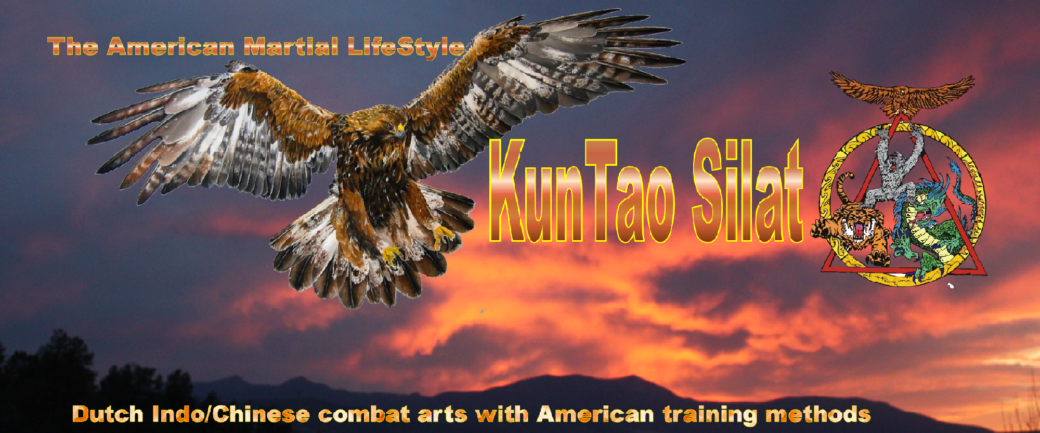As Ibu Rose mentioned in her recent guest post, Pak Steve and I are working on the definitive KunTao Silat book. Here is an early excerpt, subject to much change:
One of the biggest victims of cultural misunderstanding and outright misrepresentation as the martial and medical arts of Asia have spread to the West is the concept of Vital Points.
Innumerable charlatans have made fanciful claims about the efficacy of the Vital Points, whether for combat or triage.
The Meridian and Acupoint system of East Asian Medicine (as well as its cousins of South and Southeast Asian origin) are sophisticated, with thousands of years and millions of human beings’ worth of trial and error behind them. And just like any other field of endeavor, once we leave the comfort of the textbook and laboratory spaces where “should be’s” rule the day, we hit the uncomfortable bell curve of reality when dealing with application in the real world.
This variability of potential is why instructors, even those with considerable “live fire” experience, can disagree so vehemently about the legitimacy of targeting the Vital Points when training martial arts with any sort of real life use in mind. As with many things, a tendency towards absolutism rather than an acknowledgment of nuance is likely to blame for the bellicose discourse.
That certain places on the human body are vulnerable to assault seems without question: even the most evangelical critics of the Vital Point systems of Asia acknowledge the demonstrable reality seen weekly in MMA matches and Kickboxing events where blows to the chin, nose, space behind the ear, solar plexus, floating ribs, and iliotibial bands (not to mention “accidental” eye pokes and groin blows) produce statistically consistent (though not identical) responses.
The problem is that no single target or technique is ever a guarantee. This is a dirty secret that so many “professional” instructors do not want their students to hear.
How many punches does the average pro fighter take before a knockout?
Some men can shake off a blow to the testicles, or at least power through for several more seconds before the pain catches up to them. Others will drop to the ground almost immediately. A cocktail of factors is at play in any combative interaction, from physical conditioning to the effects of adrenaline to an individual’s mental willingness to endure pain to the presence of alcohol or drugs on pain receptors and so on.
Even when weapons are used with deadly force the laws of physics and physiology can appear unreliable. Dr. Pyndus was once told a graphic story by a Red Beret of a headshot that ricocheted off the target’s forehead, zoomed along the scalp and popped out the skin on the back of the head with no serious effects.
Then again, other people will fall into shock at the first sign of blood, even if they are “trained.”
Moreover, absolute terror and adrenaline affect fine motor skill, so the targeting of small or specific points can be very difficult when under real pressure. It is untrue to label it impossible, as the authors know from personal experience as well as the experience of their peers that targeting the Vital Points CAN be possible in a real encounter, whether competitive or combative, but the reflex to hit those zones must be so ingrained as to be automatic. Such ability requires a considerable level of training. A great example are high level military operators, who are so well disciplined they can consistently shoot vital areas even when under enemy fire. In theory all martial artists should aspire to this level of skill, but practically that is an unrealistic expectation for many people whose practice is a hobby rather than a life and death necessity.
As KunTao Silat is a pugilistic system, we acknowledge and train the intricacies of the Vital Point and Meridian system at the higher levels of the system (and also make careful study of Western Anatomy and physiology while we are at it). However, the practical necessity of reliable methods in the face of danger is also recognized, so rather than try to force new students to memorize any number of complicated striking targets which may or may not produce repeatable effects in “live fire” situations, instead we focus on a set of simple targets known as the Six Zones of Attack.
Unlike many conventional striking strategies, rather than emphasize pain response in the enemy, the Six Zones of Attack involves disrupting the skeletal structure and kinesthetic function of the body. If a man is off balance and twisted up, regardless of his sensitivity to pain he will be unable to bring to bear his full power and skill against you.
That these Six Zones encompass numerous “classical” Vital Points which can trigger pain, circulatory disruption, hinder breathing, steal consciousness, and produce other ill effects are an adjunct to the key strategy of breaking structure.
The Six Zones of Attack are:
- Ankles/Feet
- Knees
- Pelvis
- Diaphragm/Solar Plexus
- Shoulder Girdle
- Neck/Head
When making entry against an opponent, the KunTao Silat player at minimum trains to disrupt two zones at once, typically one lower body zone and one upper. This splits the enemy’s mental attention as well as compromises their ability to employ their muscular power to full effect.
As mentioned above, the Vital Points as recognized in acupuncture and acupressure tend to occur in rings around major joints or structures, so in assaulting the Six Zones, these points are necessarily attacked, generating additional effects.
As a KunTao Silat player advances, more and more detail regarding the Vital Points for both combat and healing is taught, but the foundation for self defense is always on these simple Six Zones.
Discover more from KunTao Silat
Subscribe to get the latest posts sent to your email.

No comments yet.